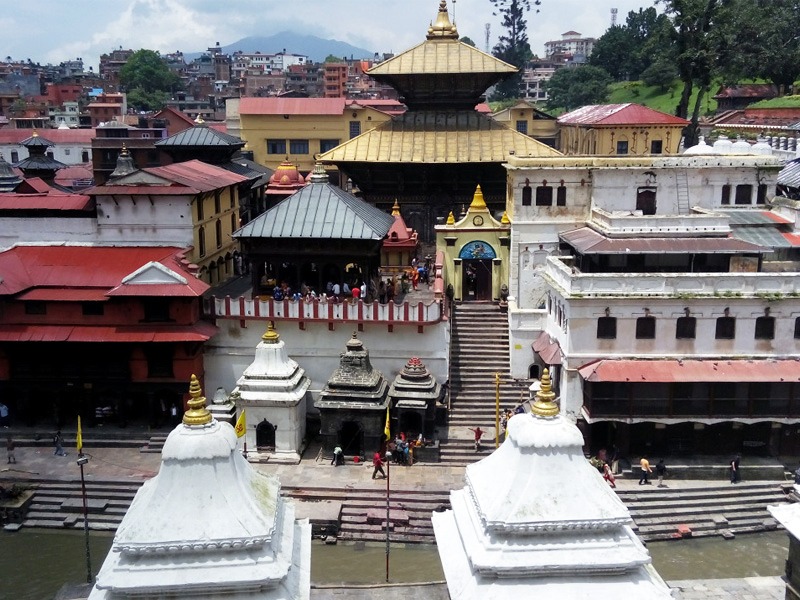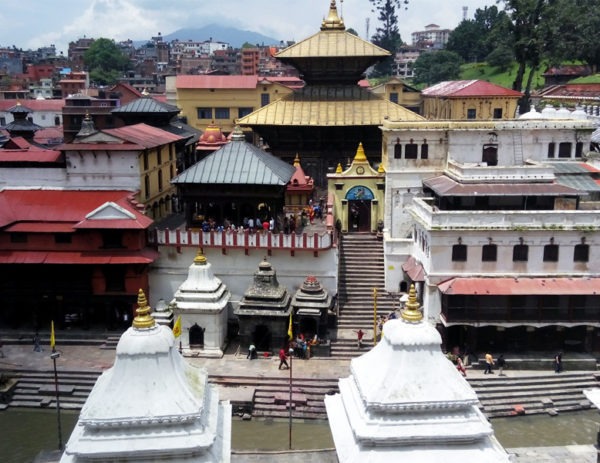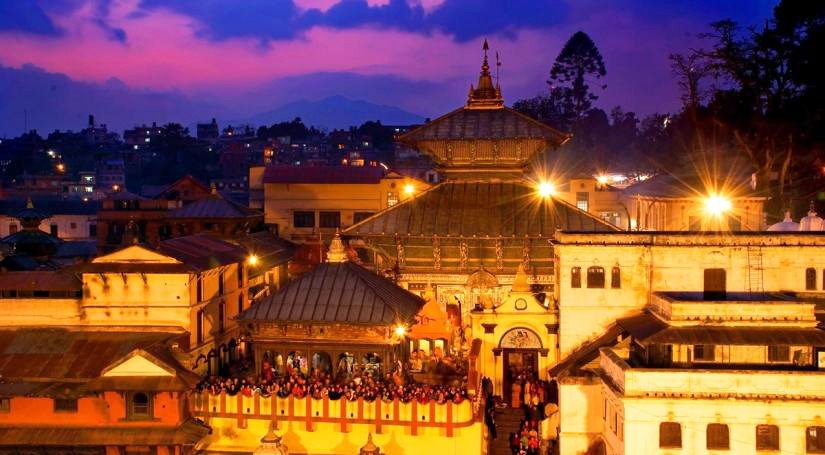Pashupatinath Temple
Pashupatinath
The magnificent temple of Lord Pashupatinath about 5 kms north-east of Kathmandu, is situated amidst many other temples on the right bank of the river Bagmati. Pashupathinath is the guardian spirit and the holiest of all Shiva shrines in Nepal.Lord Shiva is known by many different names; and Pashupati is one. Pashu means leaving beings, and Pati means master. In other words Pashupati is the master of all living beings of the universe. The temple is listed in UNESCO World Heritage Sites list.
Origin of jyotirlinga – Pashupatinath Shivalinga
Lord shiva Sri Pashupatinath is worshipped as Linga form or Shivalinga aspect.Shivalinga in Nepal is worshipped as God of Creation.A Stone roller made cylindrically in shape of phallus is inshrined in many shiva shrines of Nepal and are worshipped as direct form and symbol of lord shiva. The Famous linga of Nepal is that of pashupatinath,the guardian deity of Nepal.
The Shiva Linga of Pashupatinath is Self Existing. It is Found on the Spot where kamdhenu the Celestial cow used to offer her milk right at very spot.So due to curiosity of what was the reason that kamdhenu offers daily milk here,people started a digging the ground. And by the Suprise a Full of light gushed out and all people burnt to ashes.The All people Burn and died due to cosmic rediation emitted by linga.
It is also said that Lord shiva is said to have effused a ray of light from here connecting all the higher and lower world in order to decide quarrel between brahma and vishnu as to which them is superior. Later Brahma,Vishnu,Kubera came here and worshipped the jyotirlinga(Repledent linga).It is said that lord vishnu made easy to worship pashupatinath linga by offering mukuta,built a temple and made easy to darshan for all.
A Unique feature of pashupatinath is that the linga had Panchamukhi Wigraha,Five Face of lord pashupatinath.The Four face in four direction and One face in top of linga.The four face name of pashupatinath is Tatpurush(Parabrahma),Aghor,Vamdev, and Sadojat. And up face name is Ishan.
The rulers of Nepal, over centuries made contributions in enriching and beautifying this holy temple. According to Gopalraj Vamsavali, the oldest ever chronicle in Nepal, this temple was built by Supus Padeva, a Linchchhavi King who according to the stone inscription erected by Jayadeva 11 in the courtyard of Pashupatinath in 753 AD happened to be the ruler 39 generation before Manadeva (464-505 AD). Yet, there is another chronicle which states that this temple was in the form of Linga shaped Devalaya before Supus Padeva constructed a five storey temple of Pashupatinath in this place. As the time passed, the need for reparing and renovating this temple arose. It is learnt that this temple was reconsturcted by a mediaeval King named Shivadeva (1099-1126 AD). It was renovated by Ananta Malla adding a roof to it.
As described in the history, this temple was attacked and badly destroyed by Sultan Samsuddin of Bengal in the mid 14th Century. This plunder caused so much damage to the temple that it needed reconstruction. It was only after ten years, in 1360 AD, that it could be reconstructed and renovated by Javasimha Ramvardhana. Another renovation work here after was taken up by Jyoti Malla in 1416 AD.
On the both sides of each door of the temple there are artistic niche of different sizes containing attractive images of Apsara, Ashtha Bhairava and other gods and goddesses. These images and niches, painted with gold enhance the grandeur of the temple. The latticed windows below the roof are another elements of attraction. The struts supporting the roofs and depicting the image of different postures are equally alluring. The gold gilt images of birds in flying posture in all the four corners of the roof and the winged images of lion, griffin, Ajarapurusa and Mahanaga on the struts in all the corners of the temple gies soaring beauty to the temple. On the upper part of the struts supporting the lower roof, the images of moon, sun and a Purna-Kalasha are carved out. This Purna Kalasha is worshiped as a symbol of Guheshwori.
In the sanctum of the temple, there is a very attractive, about three feet high Shivalinga with four faces. All these faces have different names and significance. The face facing east is known as Tatpurusha and the one facing south as Aghora. Similarly, the faces looking west and north are known by the name Sadhyojata and Vamadeva respectively. The upper portion of this linga is known as Ishan. These faces are also defined as the symbol of four dharmas (the most famous places of pilgrimage for Hindus) and four Vedas (sacred books of Hindus). The images of Vishnu, Surya, Devi and Ganesh are also placed in the sanctum of the temple.
Pashupati area is regarded as one of the most important places of pilgrimages for the followeres of Hinduism. Thousands of devotees from within and outside the country come to pay homage to Pashupatinath every day. And on special occasions like Ekadasi, Sankranti, Mahashivratri, Teej Akshaya, Rakshabandhan, Grahana (eclipse), Poornima (Full moon day) people congregate here in far greater number. Pashupati area is also included in the list of world cultural heritage.
-
IncludedPashupatinath Temple
TOUR LOCATION






